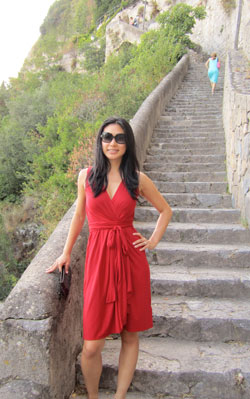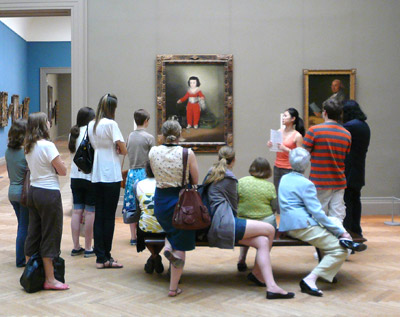
Aimee Ng earned a Ph.D. in Art History at Columbia University in 2012, with a specialization in Italian Renaissance Art. She will hold the position of Core Lecturer at Columbia from 2012 to 2014.
After graduating from Queen’s with the Medal in Art in 2005, she moved to New York City as a doctoral candidate at Columbia. She earned an M.A. in Italian Renaissance art in 2006 and an M.Phil. in 2008 with examinations in Fifteenth- and Sixteenth-Century Italian art and Eighteenth-Century French painting. Fellowships and grants supported her research abroad in England, France, and Italy. As a graduate student, she held research positions in the curatorial departments of The Morgan Library & Museum and The Frick Collection. Also as a student, from 2003 to 2009, she worked part time as a group fitness instructor specialist, a role that complemented her primary commitment to academic study by promoting health and fitness.
Ng’s Ph.D. dissertation focused on the dispersal of sixteenth-century Italian artists from Rome during the Sack of 1527 and the works of art they produced in exile. She was privileged with the opportunity to contribute an essay on the prints and drawings of Francesco Parmigianino to the Festschrift in honor of David McTavish, edited by Una Roman D’Elia, both former professors of Ng’s at Queen’s who continue to impact her research (Rethinking Renaissance Drawings: Essays in Honour of David McTavish, forthcoming in 2013).
I chose the BFA program at Queen’s because of the structure of the program, which emphasized traditional technical training in the first year, a wide range of traditional and non-traditional media in subsequent years, and a strong academic component. This system demonstrated the value of a sound technical foundation for both creative production and critical thinking. The collaboration between the Fine Art and Art History faculty in the Department of Art allowed me to dedicate my fourth year to composing a series of large-scale paintings under the supervision of a studio faculty advisor as well as an academic faculty advisor. In addition to the seemingly countless hours spent in studio – whether under instruction, dedicated to life studies, or devoted to independent projects – the requisite class critiques of our projects, conducted by studio instructors, are one of the most memorable and valued aspects of my time in the BFA program. These critical sessions were often as intensely emotional as they were intellectual, and they enriched both my studio production and academic study in ways that, in part, only became apparent years later.
